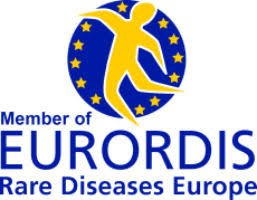Ring Chromosomes
Normal human Chromosomes are rod-shaped, but sometimes the two ends of a chromosome can fuse together, creating a ring. Ring Chromosomes have been identified for each of the 23 human Chromosomes, and in most cases, the rings are associated with clinical problems. Some rings are more common than others, and the Ring Chromosome 20 is one of the more commonly seen rings, with enough cases reported that the clinical features are well documented and constitute the Ring 20 Syndrome.
However, there are several different forms of the r(20) syndrome, with potential differences among individuals in the size of the chromosomal deletions and differences in the percentage of cells with the ring. The ring can be associated with deletions at one or both ends and may occur when the fusion takes place; these deletions can be of different sizes, with more or less genes deleted.
Phenotype
Individuals with Ring Chromosome 20 Syndrome typically present with medically intractable focal epilepsy with childhood seizure onset. These seizures are partial complex with altered consciousness, which may include staring and focal motor symptoms. Seizure activity is the most prominent clinical characteristic of individuals with r(20). Additional symptoms have been reported in individuals with deletions on the Ring Chromosome 20, and the spectrum of presentations is wide. Diagnosis of r(20) syndrome from clinical findings can be difficult as many patients present with frontal lobe epilepsy and other non-specific characteristics similar to those of other disorders.
Mosaicism
The ring can be in every cell of an individual or it can be present in only a subset of cells (mosaicism). These variables will impact the clinical features associated with the ring. Research has shown that one third of patients studied have the ring in all of the cells studied, and these patients always have a deletion at one or both ends of the chromosome. The remaining two thirds have no deletions at the ring fusion point, and they only have the ring in a portion of their cells with a variable percentage of cells having the ring. Nevertheless, both groups of patients have similar seizures, although the age of onset may be later in the mosaic group, and those with a deletion may have additional clinical features. The level of mosaicism does not seem to determine response to drug treatment and the range in IQ for a given mosaic percentage is relatively wide. Therefore, the prediction of phenotype from the mosaicism ratio should be done with caution with regards to genetic counseling. Additional work to understand the relationship between mosaicism and clinical features is underway. It is important to note, that the test done to identify the rings is a chromosome analysis, which is most often carried out on blood cells, so we are only looking at one specific tissue type, unless an effort is made to study other tissues such as skin.
Supernumerary r(20)
A ring chromosome 20 is sometimes identified as an extra chromosome in addition to the two normal ones. This situation is genetically distinct from the rings where there is only one normal chromosome 20 and one ring. In the case where there are two normal Chromosomes plus the ring, the patient has an extra copy of chromosome 20 (trisomy 20 or partial trisomy 20 if the ring has deletions). This is also sometimes called a supernumerary r(20) and hence gives rise to the clinical picture of a partial trisomy or supernumerary r(20). This supernumerary r(20) causes multiple anomalies but not epilepsy, and the resulting syndrome should be differentiated from r(20) syndrome. In the literature, these two syndromes have been often confused.
Why does r(20) cause seizures?
It is not known why the ring chromosome 20’s cause seizures and other clinical problems, but there are several hypotheses. It may be that some of genes on chromosome 20 are crucial for proper brain function and their disruption when the ring is formed causes the clinical problems. While this may be true in some cases, not all rings are associated with deletions and so this is unlikely to cause the problem in all patients. Alternatively, the ring structure itself might cause problems since the cell has trouble making a copy of the ring, which it must do every time the cell divides. Another possibility is that the ring structure might interfere with expression of genes from the ring chromosome, which is necessary for proper cell function. Finally, the ring might be unstable, and might get lost on a regular basis, leaving some cells with only a single chromosome 20, which is not well tolerated for normal function.
Inheritance
Ring chromosome 20 syndrome is rarely inherited. The ring structure usually forms as a random event during the formation of eggs or sperm or in the early stages of embryonic development. Most r(20) patients have no family history of the disorder. Only one case of inheritance from an affected mother to her more severely affected children is known at this time. There is a theoretical possibility that the ring chromosome exits in the precursors of sperm or egg cells in unaffected parents; this is known as germline mosaicism. If this is a concern, consultation with a genetic counselor about recurrence risk and available options is advised.
Further investigation of this disease may clarify the mechanism of epilepsy in this syndrome.








